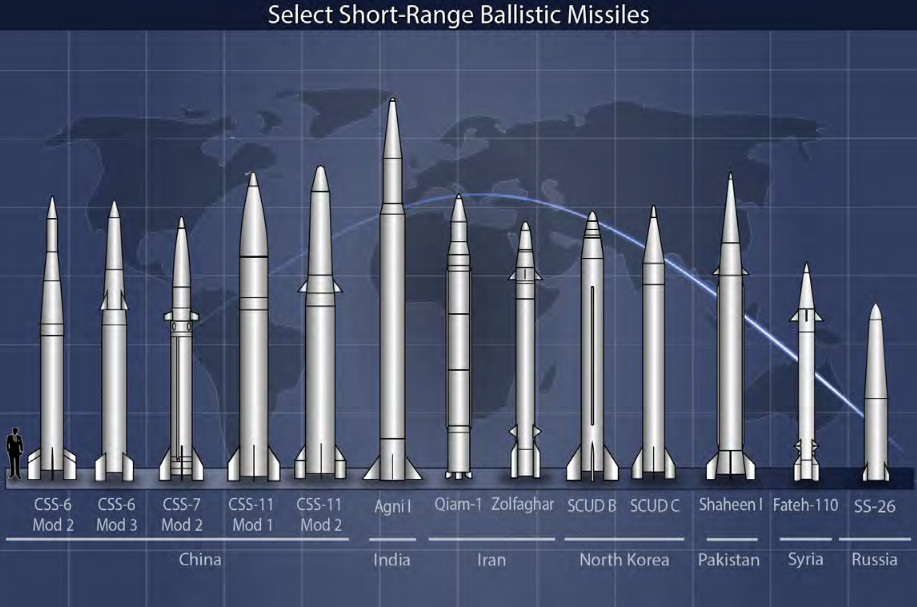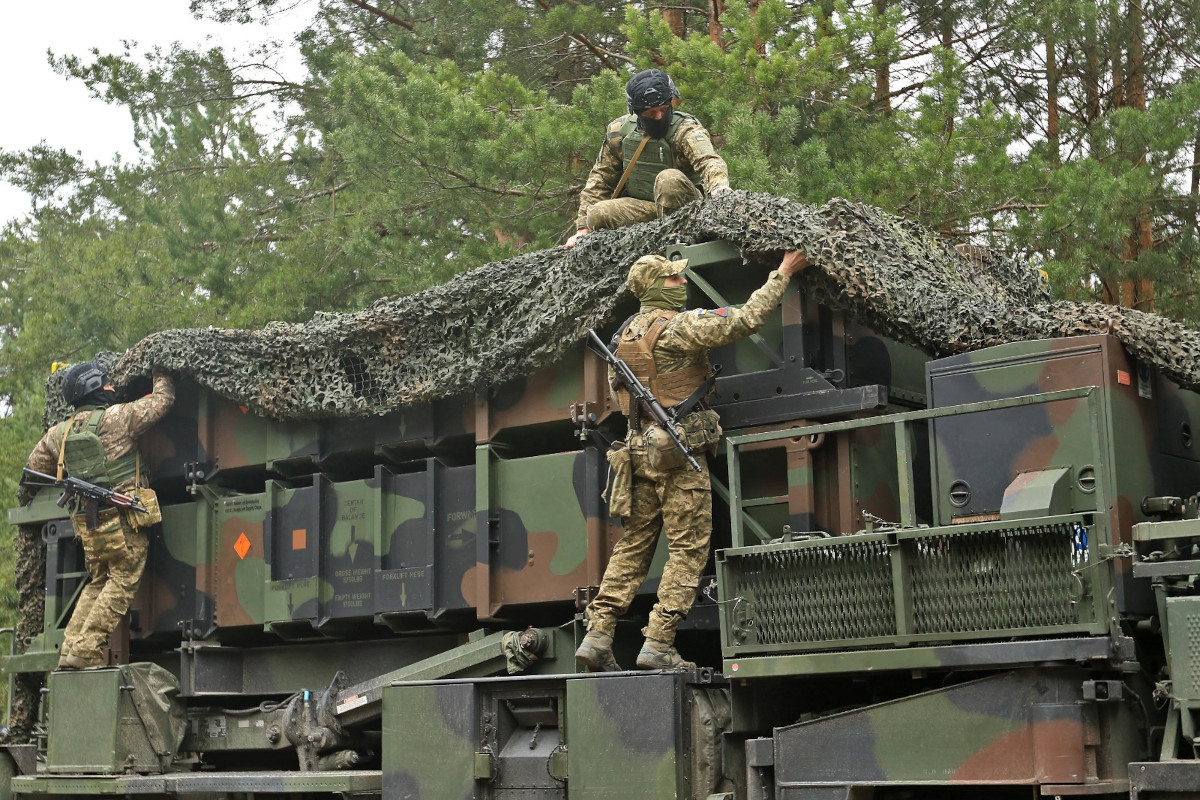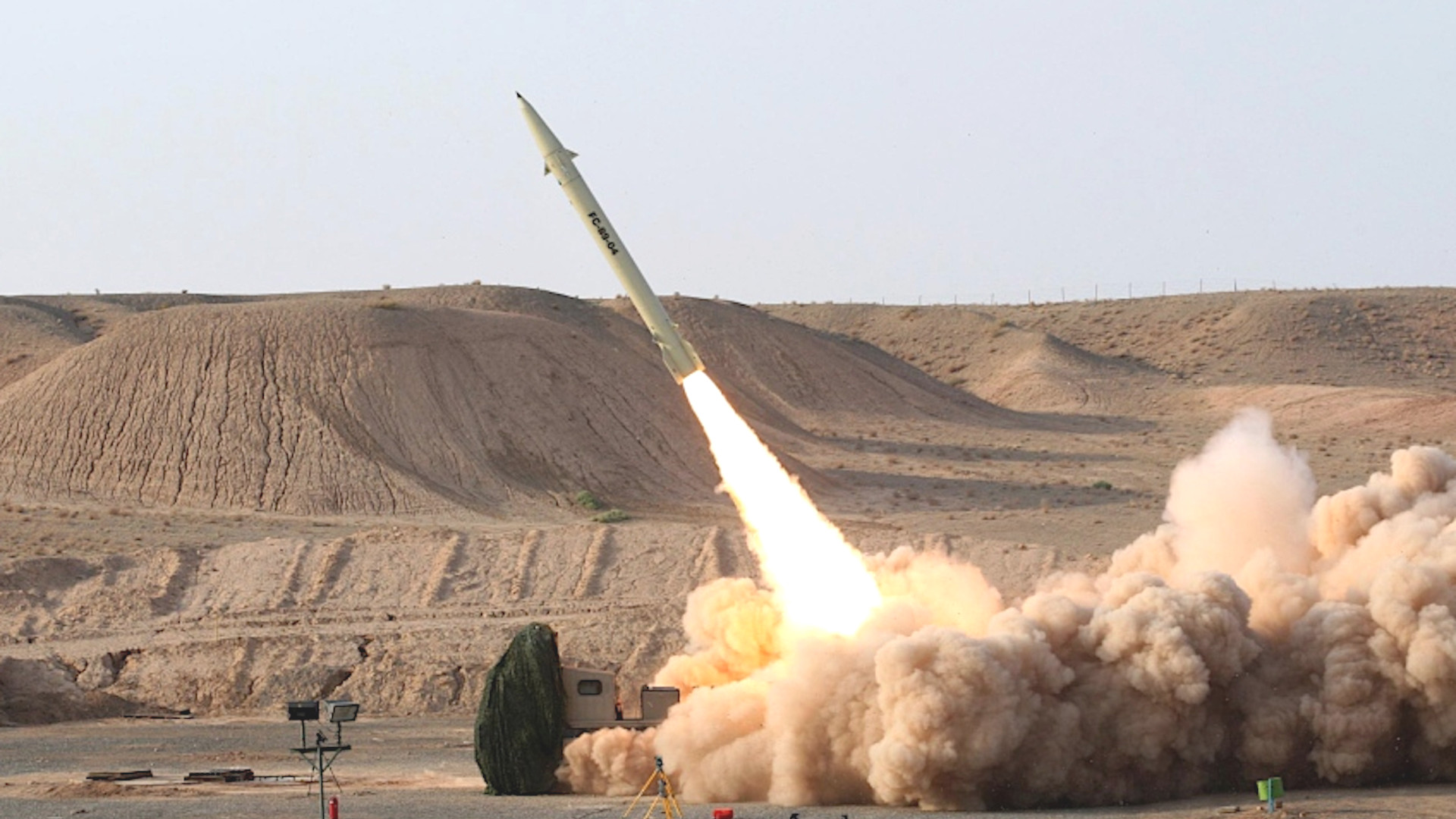Russia has finally begun receiving hundreds of Iranian ballistic missiles, according to a new report. If true, these deliveries would bolster Russia’s dwindling ballistic missile arsenal, which has already presented significant challenges for defenders in neighboring Ukraine, with additional combat-proven types. The War Zone highlighted these exact issues in detail before and after the first reports that Iran might send ballistic missiles to Russia first emerged in late 2022.
Reuters was the first to report on Iran’s new deliveries to Russia, comprising around 400 ballistic missiles in total, earlier today, citing six unnamed sources, including multiple Iranian officials. Additional anonymous U.S. and Ukrainian officials told that outlet that they had no information about Russia actually receiving such weapons from Iran, despite active negotiations on the matter, or any evidence of their use on Ukrainian battlefields so far. Russia also began acquiring additional short-range ballistic missiles from North Korea at the end of last year, further pointing to new efforts to source weapons of this type from foreign sources.

“An Iranian military official – who, like the other sources, asked not to be identified because of the sensitivity of the information – said there had been at least four shipments of missiles and there would be more in the coming weeks,” according to Reuters. “Another senior Iranian official said some of the missiles were sent to Russia by ship via the Caspian Sea, while others were transported by plane.”
“There will be more shipments,” one of the Iranian officials said, per Reuters‘ report. “There is no reason to hide it. We are allowed to export weapons to any country that we wish to.”
The missiles in question are reportedly variants and/or derivatives of Iran’s Fateh-110 family. Reuters report specifically mentions the Zolfaghar, an improved derivative of the Fateh-110 with greater range. The U.S. military assesses that the baseline Fateh-110 has a maximum range of some 186 miles (300 kilometers), while the Zolfaghar can hit targets out to around 435 miles (700 kilometers).


Fateh-110 and Zolfaghar, which are both capable of hitting static targets with high degrees of precision, have been named in past reports as being central to Russian negotiations with Iran about the acquisition of ballistic missiles. Both of these missiles have been in mass production for years now in Iran and supplies of them are plentiful.
“At this time, we do not believe that Iran has delivered close-range ballistic missiles to Russia,” John Kirby, the top spokesperson for the White House’s National Security Council (NSC), had said at a press conference in January. “However, the United States is concerned that Russian negotiations to acquire close-range ballistic missiles from Iran are actively advancing.”
The U.S. military defines close-range ballistic missiles (CRBM) as a subset of short-range ballistic missiles (SRBM) with maximum ranges under 186 miles (300 kilometers). SRBMs are categorized as having ranges of no more than 620 miles (1,000 kilometers). American authorities typically describe both Fateh-110 and Zolfaghar as SRBMs.

Iran has already supplied Russia with large numbers of kamikaze drones and assisted authorities in that country in setting up domestic production of these uncrewed systems. The Russian government has reportedly paid for those drones, at least in part, in gold. The regime in Tehran has also been working to acquire advanced Russian weapon systems, including Su-35 Flanker-E fighters, as part of exchanges in kind.

Iranian officials had, until relatively recently, looked to have largely backed off plans to supply Russia with ballistic missiles.
An infusion of hundreds of Iranian ballistic missiles could be a boon for Russian forces, who have seen the size of their domestic ballistic missile inventory diminish after years of fighting in Ukraine The longer-range Zolfaghar, especially, would give Russia new capacity to conduct ballistic missile across Ukraine from potential launch points in Russia, as well as neighboring Belarus. it would also allow them to position the launchers for those weapons further away from the front lines while still being able to target significant swaths of Ukraine.
As The War Zone has highlighted on multiple occasions in the past, ballistic missiles in general present distinct challenges for defenders compared to air-breathing threats given the very high speeds they reach in the terminal phase of flight. This makes interceptions especially difficult and reduces the overall amount of time available to react. That speed also gives these missiles additional penetrative capabilities against more hardened targets, including objects like bunkers, and critical infrastructure, like bridges.
Reuters‘ story today also follows claims from Ukrainian officials that the ballistic missiles Russia has received from North Korea, which are reportedly full of U.S. and other foreign-made components, may not be performing as expected. As noted earlier, Iran has demonstrated the accuracy and other functionality of variants and derivatives of the Fateh-110, including Zolfaghar, in actual strikes on Iraq and Syria over the past decade or so.
There are unconfirmed reports that an Iranian ballistic missile strike in January on targets in Iraq’s semi-autonomous Kurdish region in the northern end of the country may have involved Fateh-110s. Iran again struck targets in Syria at that time, as well. Separately, Iran also employed Kheibar Shekan medium-range ballistic missiles (MRBM), another evolution of the Fateh series, for the first time in strikes on targets in Pakistan last month. Those were the longest-range Iranian ballistic missile strikes to date and demonstrated the country’s general ability to hit targets across the Middle East, including in Israel. You can read more about all of these Iranian strikes here.
In addition, Iranian-backed Houthi militants in Yemen have been actively employing anti-ship ballistic missiles in their ongoing campaign in and around the Red Sea. The Houthi’s anti-ship ballistic missile arsenal includes multiple designs based on variants and derivatives of the Fateh-110 family.
At the same time, Ukraine is experiencing an increasingly worrying shrinkage in foreign military aid, particularly from the United States. This, in turn, has raised particular concerns about the country’s air and missile defenses, which have seen significant modernization and expansion in the past two years or so with Western assistance.
Ukrainian forces have been able to intercept Russian ballistic missiles like ground-launched Iskander-Ms and air-launched Kinzhals in the past. However, the country’s authorities have made no secret about their limited options for engaging incoming ballistic threats. Patriot surface-to-air missile systems acquired from the U.S. and other Western countries now form the core of Ukraine’s anti-ballistic missile capability, but are also in very high demand to engage a host of other targets.

A report from the U.S. Department of Defense’s Office of the Inspector General, or DODIG, published yesterday raised additional concerns about the future of Ukraine’s Patriot force given the emergency nature of how the systems were supplied and the current lack of a long-term sustainment plan.
“Providing Patriot air defense systems to the UAF [Ukrainian Armed Forces] without a strategy for sustainment increases risks to both the DoD and Ukraine,” the report warns. “Specifically, the UAF may not be able to independently sustain Patriot air defense systems, which increases the risk that Ukraine may not be able to deter or defend itself against Russian aggression.”
DODIG has recommended that the U.S. military “develop and implement a sustainment strategy for Patriot air defense systems transferred to the UAF,” after determining the requisite requirements and “determine whether current processes should be adapted or additional processes should be identified or developed to provide funding for sustainment of the Patriot air defense systems transferred to the UAF.”

A major issue now is where any such funding for long-term sustainment of Patriot systems, as well as other more advanced weapon systems the U.S. military has provided to the Ukrainian military, might come from. There is currently a deadlock between President Joe Biden’s administration and members of Congress over military assistance to Ukraine’s armed forces in general. There is already evidence that this is contributing to significant battlefield losses for Ukraine.
With all this in mind, if Russia has indeed now received hundreds of combat-proven Iranian ballistic missiles after more than a year of negotiations, and expects to see more deliveries in the near future, this would be an especially concerning development for Ukraine.
Contact the author: joe@twz.com
